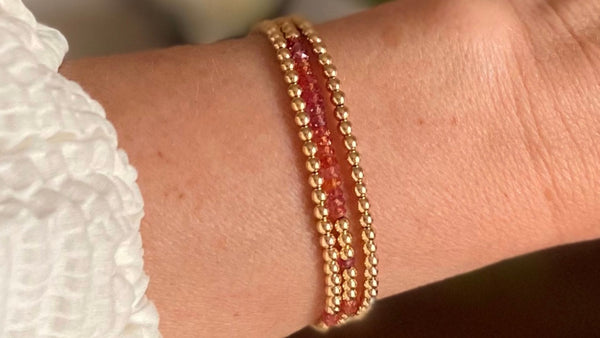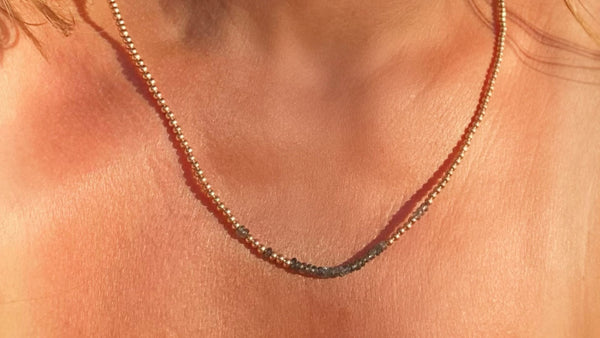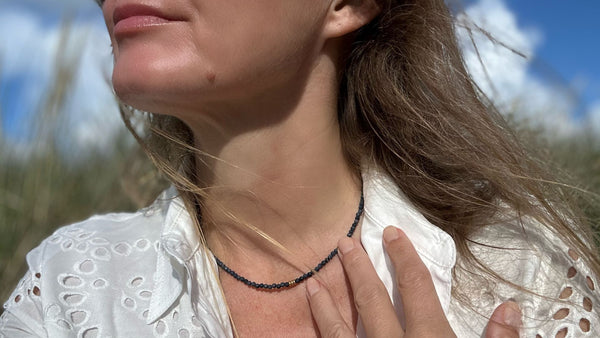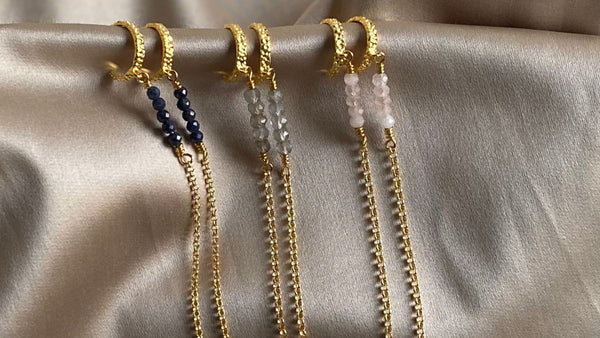Introduction
Sapphires are one of the big three of the most precious coloured gemstones, along with rubies and emeralds.
Sapphires are a type of corundum, which is a rock-forming mineral also found in rubies. Corundum is a naturally transparent material, but can have different colours.
The colour of a sapphire is determined by the impurities that are present in the corundum. Blue sapphires are the most common, but sapphires can also be found in colours such as yellow, green, pink, and purple.
Sapphires have been prized for centuries. They were used by the ancient Egyptians, Greeks, and Romans, and they were also popular in medieval Europe. Sapphires were often worn by royalty and the clergy, and they were believed to bring good luck and protection.
Today, sapphires are still very popular gemstones, they are use in all types of jewellery design including rings, bracelets, necklaces, and earrings, as well as in watches and other decorative items.
History of Sapphires
The history of sapphires dates back to ancient times. They were first mentioned in writings from the ancient Egyptians, who believed that sapphires were sacred to the god Ra, the sun god. The Egyptians also believed that sapphires could protect against evil spirits and bring good luck.
Sapphires were also popular in ancient Greece and Rome. The Greeks believed that sapphires could improve vision and promote wisdom, whilst the Romans believed that sapphires could ward off nightmares and protect against poisoning.
Sapphires continued to be popular throughout the Middle Ages and the Renaissance. They were often worn by royalty and the clergy, and they were believed to have magical powers.
In the 19th century, sapphires became more affordable and they became more popular as jewelry. Today, sapphires are still one of the most popular gemstones in the world.
Healing Properties of Sapphires
Sapphires have been associated with healing properties for centuries. They are said to help with a variety of conditions, including anxiety, stress, insomnia, and headaches. Sapphires are also said to promote emotional balance and spiritual growth.
There is no scientific evidence to support the healing properties of sapphires. However, many people believe that sapphires can help them to feel better. If you are considering using sapphires for healing purposes, it is important to talk to your doctor first.
Literary and Artistic References to Sapphires
Sapphires have been mentioned in many literary and artistic works throughout history. In the Bible, the breastplate of the high priest was adorned with 12 gemstones, including a sapphire.
In Shakespeare's play "The Merchant of Venice," the character of Portia wears a sapphire ring that is said to bring good luck.
Sapphires have also been featured in many paintings and sculptures. For example, the goddess Venus is depicted wearing a sapphire necklace in the painting "The Birth of Venus" by Sandro Botticelli.
Where Are Sapphires Found?
Sapphires can be found in many different parts of the world. Some of the most notable sources of sapphires include Sri Lanka, Thailand, Australia, Tanzania, Myanmar, Madagascar, Pakistan, United States, and Vietnam. Below follows a few words of what is typical for the sapphires from each of these counties:
Sri Lanka is known for producing some of the finest sapphires in the world. The sapphires from Sri Lanka are typically deep blue in colour and have a high clarity.
Thailand is another major producer of sapphires. The sapphires from Thailand are known for their rich blue colour and their durability.
Australia is home to some of the largest sapphire mines in the world. The sapphires from Australia are typically blue, green, or yellow in colour. Most to the Sapphires I use in my designs are from Australia.
Tanzania is a relatively new source of sapphires, but the sapphires from Tanzania are quickly gaining a reputation for their high quality
Myanmar is a major producer of rubies, but it also produces some high-quality sapphires.
Madagascar is a lesser-known source of sapphires, but the sapphires from Madagascar are gaining popularity due to their unique colours and patterns.
Pakistan is a major producer of sapphires, particularly blue sapphires.
The United States has a few small sapphire mines, but the sapphires from the United States are not as well-known as those from other countries.
Vietnam: Vietnam is a relatively new source of sapphires, but the sapphires from Vietnam are quickly gaining a reputation for their high quality.
The geographic location of a sapphire mine can affect the colour, clarity, and durability of the sapphires that are produced. For example, the sapphires from Sri Lanka are typically deep blue in colour because of the high levels of iron oxide in the soil. The sapphires from Thailand are known for their rich blue colour and their durability because they are formed in metamorphic rocks.
The quality of a sapphire is also affected by the mining practices used. Responsible and transparent mining practices can help to ensure that the sapphires are mined in an ethical and sustainable way. The image below features the RAW Wrap with ethically sourced sapphires from Australia.
How to Care for Sapphires
Sapphires are relatively hard gemstones and they can withstand everyday wear and tear. However, it is important to take care of your sapphire jewelry to keep it looking its best.
You should avoid wearing your sapphire jewellery in water or chemicals. You should also avoid cleaning your sapphire jewelry with harsh chemicals. Instead, you can clean your sapphire jewelry with a soft cloth and mild soap.
Conclusion
Sapphires are a beautiful and versatile gemstone. They can be worn for any occasion, and they can be used to make a statement or to simply add a touch of elegance to your outfit. If you are looking for a gemstone that is both beautiful and meaningful, a sapphire is a great choice, and their sparkle is almost second to none.











Leave a comment